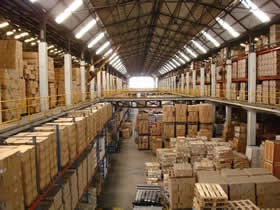Difference between Storage and Warehousing
Key Difference: Storage refers to the action or method of stocking something. The commodities are stored, in case they are not being currently used but have been planned to be used in the future. Warehousing defines the act or a process to store the commodities in a storage place specifically known as a warehouse. Generally, storage and warehousing are also used interchangeably, as warehousing is also a type of storage.
include("ad4th.php"); ?>
 Storage refers to the action or method of stocking something. The commodities are stored in case they are not being currently used but have been planned to be used in the future. It is regarded as one of the important marketing functions in which goods are held and preserved until consumption.
Storage refers to the action or method of stocking something. The commodities are stored in case they are not being currently used but have been planned to be used in the future. It is regarded as one of the important marketing functions in which goods are held and preserved until consumption.
Also read: Mall Vs. Department store.
Storage emerges as an important activity that is performed right after the production of the goods. However, sometimes the raw material may also be stored in order to be used later. Storage can be done at various places; the place of storage can be a very small room known as a storeroom or the commodities may be stored in special structures known as warehouses. Thus, one can say that data warehousing is a type of storage, and therefore most of the times they are used interchangeably in logistics. It particularly denotes the allocated space in a warehouse. Also see: Supermarket Vs. Grocery Store.
 In warehousing, the items are stored in special structures known as warehouses. Warehouses are actually scientific types of storage structures that are constructed to protect the stored products. They ensure that the quantity and quality both remain intact. It is considered to be the most common form of storage. A warehouse is generally associated with a large building. However, there are several small warehouses too.
In warehousing, the items are stored in special structures known as warehouses. Warehouses are actually scientific types of storage structures that are constructed to protect the stored products. They ensure that the quantity and quality both remain intact. It is considered to be the most common form of storage. A warehouse is generally associated with a large building. However, there are several small warehouses too.
Some of the common warehouse storage systems are Pallet Racking (including selective, drive-in, drive-thru, double-deep, pushback, and gravity flow), Mezzanine (including structural, roll formed, racks), Vertical Lift Modules, Horizontal Carousels, and Vertical Carousels.
Also see: Shopping Center Vs. Department Store
Comparison between Storage and Warehousing:
|
|
Storage |
Warehousing |
|
Definition |
Storage refers to the action or method of stocking something. The commodities are stored in case they are not being currently used but have been planned to be used in the future. |
Warehousing defines the act or a process of storing the foods in a storage place specifically known as a warehouse. Generally, storage and warehousing are used interchangeably. |
|
Types |
|
|
|
Etymology |
C13: from Old French estor, from estorer to restore, from Latin instaurāre to refresh; related to Greek stauros stake + age (suffix). |
C:18: from ware "manufactured goods, goods for sale," Old English waru, probably originally "object of care, that which is kept in custody, + house (Old English hus "dwelling, shelter"). |
|
Benefits |
|
|
Also see: Supermarket Vs. Convenience Store
Image Courtesy: swaledalecheese.co.uk, zombie-guide.com









Add new comment